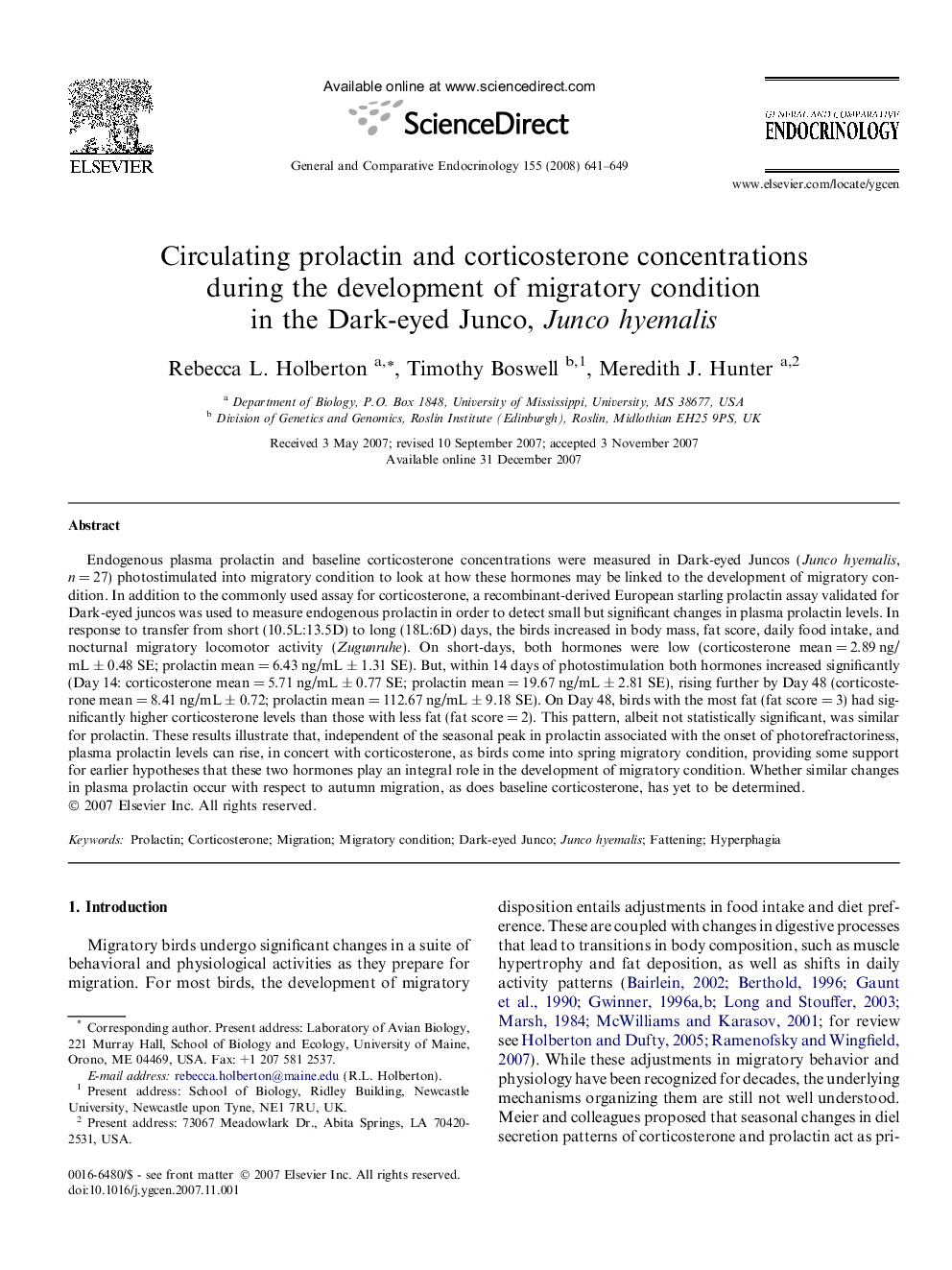| Article ID | Journal | Published Year | Pages | File Type |
|---|---|---|---|---|
| 2802049 | General and Comparative Endocrinology | 2008 | 9 Pages |
Endogenous plasma prolactin and baseline corticosterone concentrations were measured in Dark-eyed Juncos (Junco hyemalis, n = 27) photostimulated into migratory condition to look at how these hormones may be linked to the development of migratory condition. In addition to the commonly used assay for corticosterone, a recombinant-derived European starling prolactin assay validated for Dark-eyed juncos was used to measure endogenous prolactin in order to detect small but significant changes in plasma prolactin levels. In response to transfer from short (10.5L:13.5D) to long (18L:6D) days, the birds increased in body mass, fat score, daily food intake, and nocturnal migratory locomotor activity (Zugunruhe). On short-days, both hormones were low (corticosterone mean = 2.89 ng/mL ± 0.48 SE; prolactin mean = 6.43 ng/mL ± 1.31 SE). But, within 14 days of photostimulation both hormones increased significantly (Day 14: corticosterone mean = 5.71 ng/mL ± 0.77 SE; prolactin mean = 19.67 ng/mL ± 2.81 SE), rising further by Day 48 (corticosterone mean = 8.41 ng/mL ± 0.72; prolactin mean = 112.67 ng/mL ± 9.18 SE). On Day 48, birds with the most fat (fat score = 3) had significantly higher corticosterone levels than those with less fat (fat score = 2). This pattern, albeit not statistically significant, was similar for prolactin. These results illustrate that, independent of the seasonal peak in prolactin associated with the onset of photorefractoriness, plasma prolactin levels can rise, in concert with corticosterone, as birds come into spring migratory condition, providing some support for earlier hypotheses that these two hormones play an integral role in the development of migratory condition. Whether similar changes in plasma prolactin occur with respect to autumn migration, as does baseline corticosterone, has yet to be determined.
